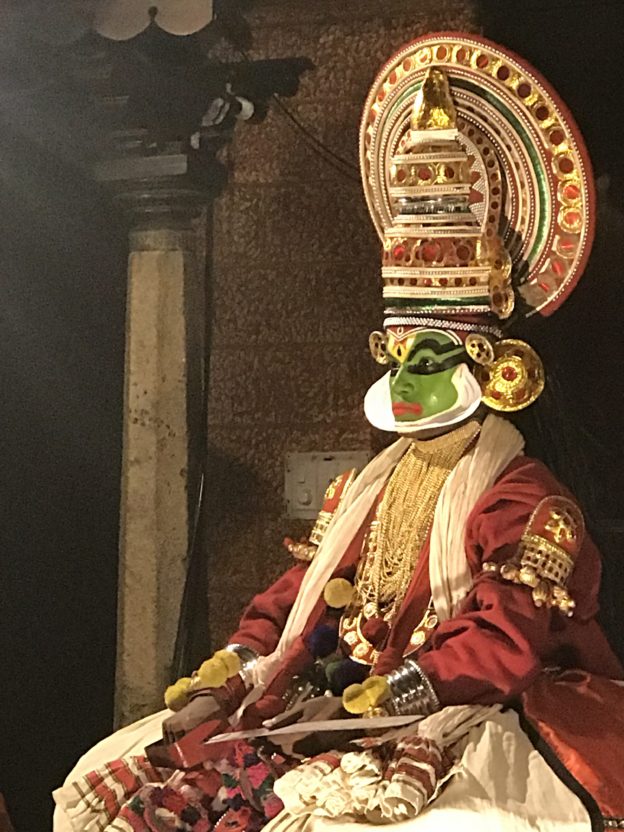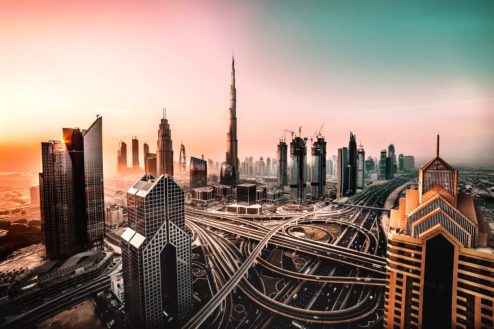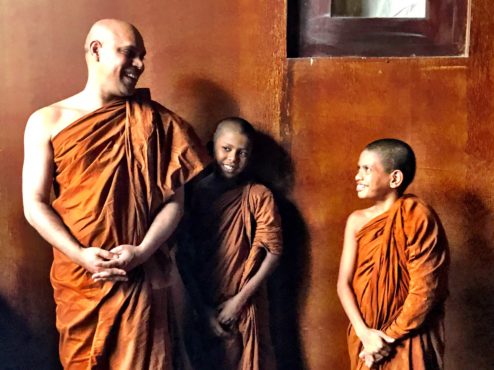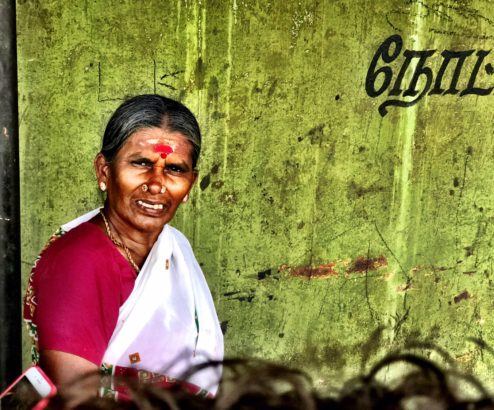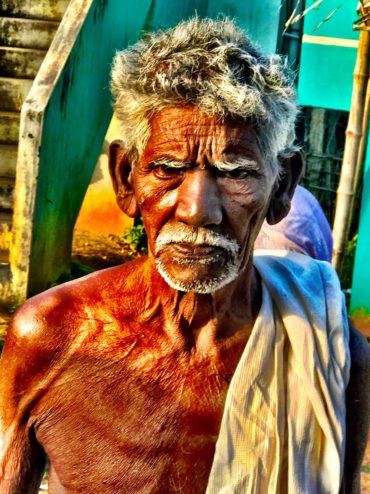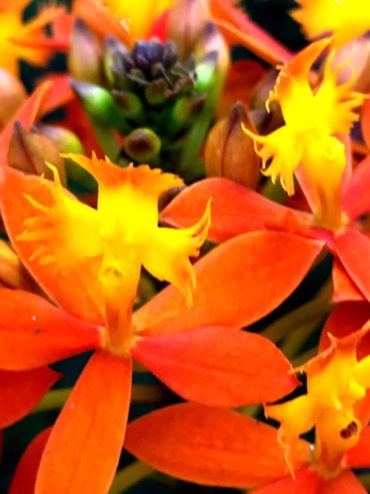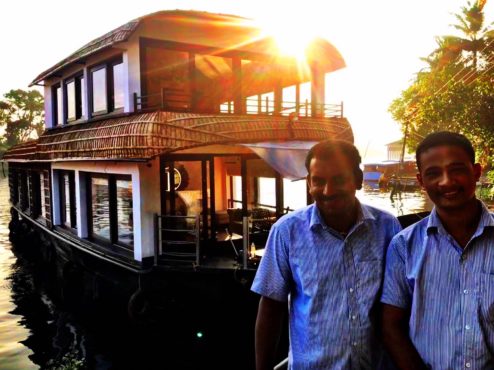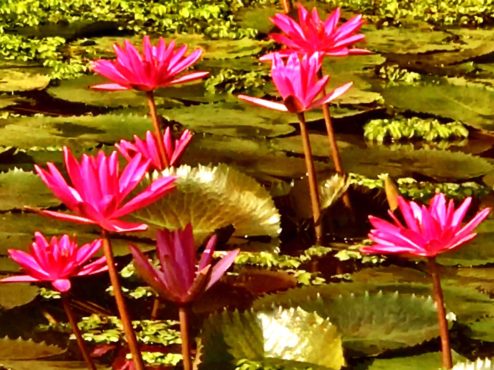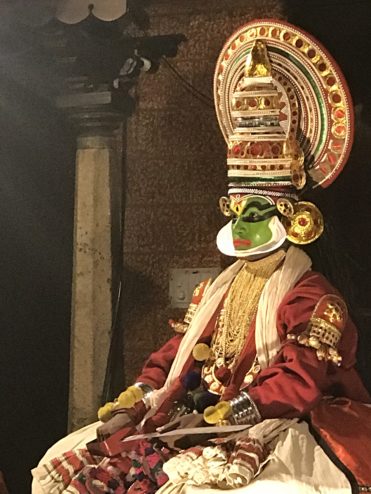DUBAI
A non-stop 17-hour flight and a 12-hour time difference brought us to Dubai, United Arab Emirates (UAE). As our main goal was to tackle our jet lag before arriving in Sri Lanka, we had few expectations of our 3 days in Dubai. Good thing, as it is just a glitzy shopping Mecca, real estate enterprise, and business hub. It certainly is no longer a small fishing village as UAE was prior to 1971. “Old Dubai” is best found riding the small ferries along Dubai Creek with the locals.
Many yellow and orange cranes loomed over Dubai’s landscape like an army of gentle dinosaurs, the crane capital of the world. Dubai is like many Las Vegases and Disneylands, all under construction at once. Thee tallest buildings on the planet. Fantastical projects. More than 900 cranes. Beautiful in its own way as you can see in the D. Rodrigo photo below.
Downtown Dubai at sunrise features the very dominant Burj Khalifa Tower(world’s tallest building since 2009 and now the world’s tallest man-made structure!).
SRI LANKA
Five hours north by air, Sri Lanka is a thoroughly Buddhist and agrarian, island culture. With a 96% literacy rate, and English taught in all levels of school, many young adults go to Dubai for jobs as nannies, in construction and sales, sending their salaries home to family. Sri Lanka, lush and green is known for three WHO sites, beaches, and wild elephants. In fact most farmers we spoke with wanted to discuss HEC, “human elephant conflict”. As homesteading to create a farm is how most Sri Lankins obtain their land, elephant migration patterns are disrupted by rice paddies and vegetable producing fields, meaning they are destroyed by elephant migration, leaving families impoverished until the next planting cycle 6 months later. Poisons, designed for other wild predators, is illegally used on elephants.
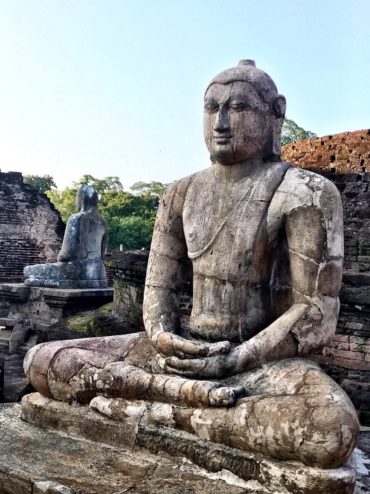 The highlight of our 9-day island tour was neither a world heritage site (although the temple of Buddha’s tooth was amazing as was the 42-story SIGIRIYA), nor birdwatching and millennials of wild elephants. It was a terrifying ride on a public bus, replete with a LOUD Bollywood video playing, disco lights flashing, and the driver’s use of a LOUD and long air horn melody as he passed on blind curves at top speed. We realized that drivers use their ears as much as their eyes to stay out of harm’s way.
The highlight of our 9-day island tour was neither a world heritage site (although the temple of Buddha’s tooth was amazing as was the 42-story SIGIRIYA), nor birdwatching and millennials of wild elephants. It was a terrifying ride on a public bus, replete with a LOUD Bollywood video playing, disco lights flashing, and the driver’s use of a LOUD and long air horn melody as he passed on blind curves at top speed. We realized that drivers use their ears as much as their eyes to stay out of harm’s way.
In spite of their sweetness and dominant Buddhist culture, Sri Lanka was torn apart by armed civil war from 1982 until the defeat of the rebel Tamil Tigers in 2009. Sri Lankans celebrate their government’s victory and enjoy the prosperity of their now peaceful nation.
SOUTHERN INDIA
Across an 18-mile inlet from Sri Lanka lies the toe of India. We spent our next 16 days exploring two southern states, Tamil Nadu and Kerala. These States are predominantly represented by Hindu and Jain worshippers.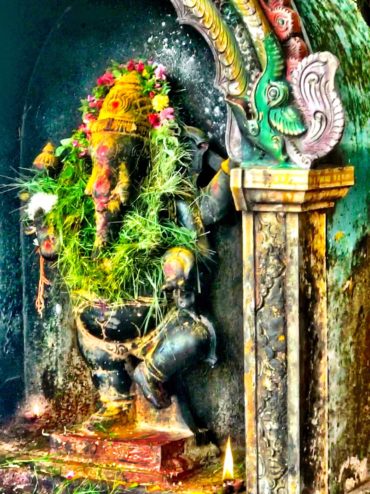 They take their worship seriously with festivals on a daily basis requiring the fanciest saris, the holy men, temple elephants, cannon firings, fireworks, and lines of patient visitors spending hours in the sun to leave fresh flowers and fruit in the temples.
They take their worship seriously with festivals on a daily basis requiring the fanciest saris, the holy men, temple elephants, cannon firings, fireworks, and lines of patient visitors spending hours in the sun to leave fresh flowers and fruit in the temples.
The intense need for more hydroelectric power has led the State of Tamil Nadu to sacrifice their fabulous Periyar National Park as the State will flood it to raise hydroelectric productivity. The birdwatching in Periyar NP was unparalleled (especially as we were once again paired with the best birder women from Wisconsin). Huge flying squirrels and varieties of monkeys also kept us company among the Tarzan yell inducing vines.
Kerala is reached by driving over the Western Gaats (coastal mountains dividing Kerala and Tamil Nadu) and revealed the growth of new houses …and sales outlets for kitchen and bathroom plumbing supplies, a sure sign of rising wealth. Kerala has a 90% literacy rate due to Catholic missionaries. It remains a predominantly Christian State. Like Sri Lanka, it exports its educated young work force to Dubai, who send money home to their families. Add a huge increase in tourism in the last 10 years with farmers moving into more lucrative work on the 1000 rice barges now converted to tourist houseboats, and their economy is booming.
The Kerala Backwaters is a huge delta of levees and islands, each serviced by passenger ferries supporting the island residents. Their houses sit on 20-ft deep levees with enough room for a tiny house and waterside walking path, sitting between the internal rice paddies and the waterways. All bathing and washing occurs waterside so local life is visible from the charming houseboats. We lucked out by being assigned to the most recently renovated houseboat with a spa tub and the best cook! It was a wonderful break from dense, noisy traffic throughout India and Sri Lanka, dodging motorbikes, three wheeled tuk-tuks, bikes, and those crazy public buses, all forms of transport blaring their horns.
The dance/art form unique to Kerala is KATHAKALI. The devotees leave their families to begin formal, full-time training before the age of nine as they are contortionists, training their bodies and their facial muscles. They must learn the facial painting and adhesive display for every character, their singing parts, hand and facial gestures, and costuming for hundreds of male/female, monster/deity, royalty/whore parts across hundreds of Hindu myths. It is so fantastic that we are printing a photo (feature image, and again below) of just one of many characters we saw in a performance in Kerala. I tried to raise my eyebrows quickly and repeatedly as they do…it is impossible without their training, much less moving tiny unique facial muscles we couldn’t even identify to make wiggle at all. We had fun grimacing like crazy just to try for a tiny wiggle!
– Posted using BlogPress from my iPad
Location:Kerala, India

